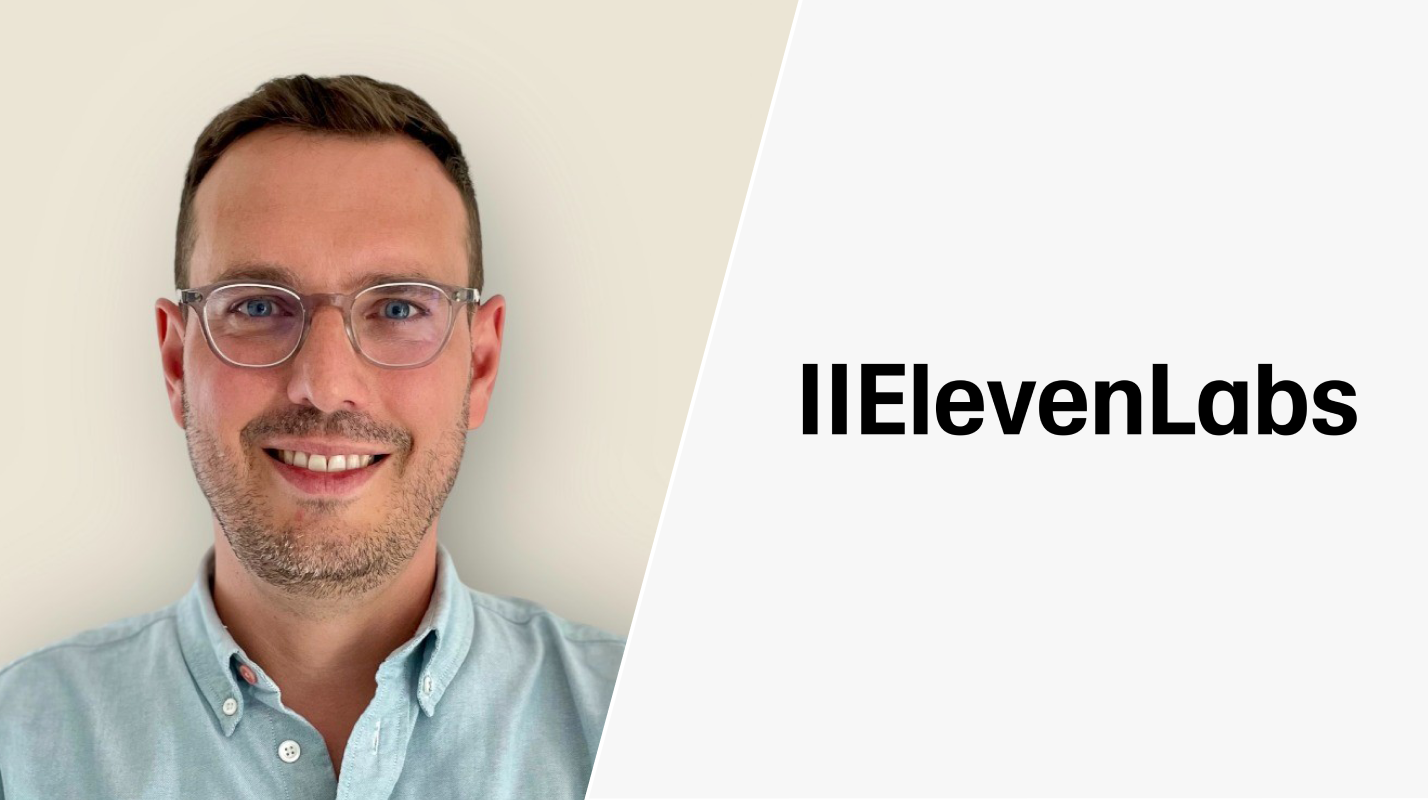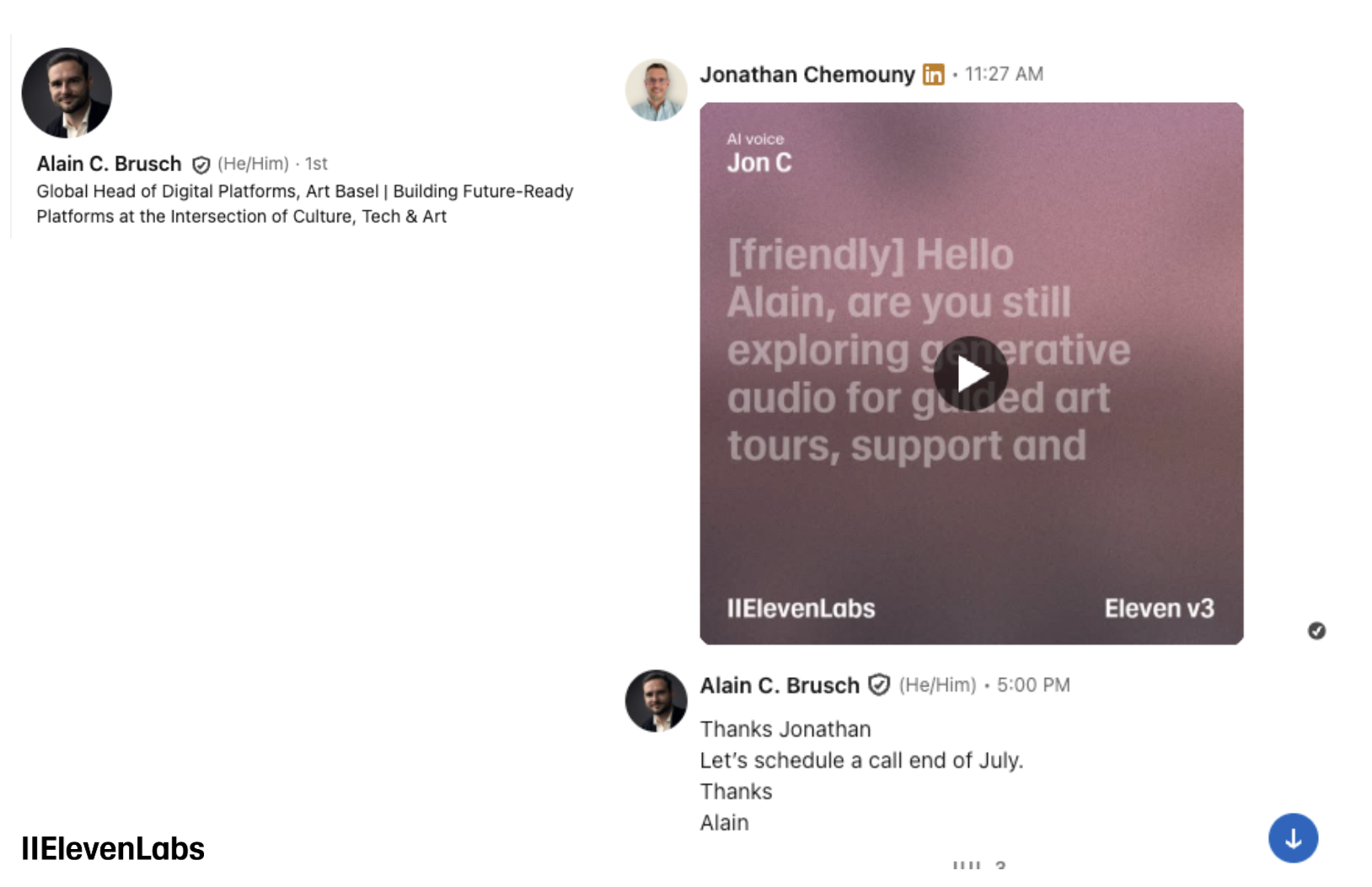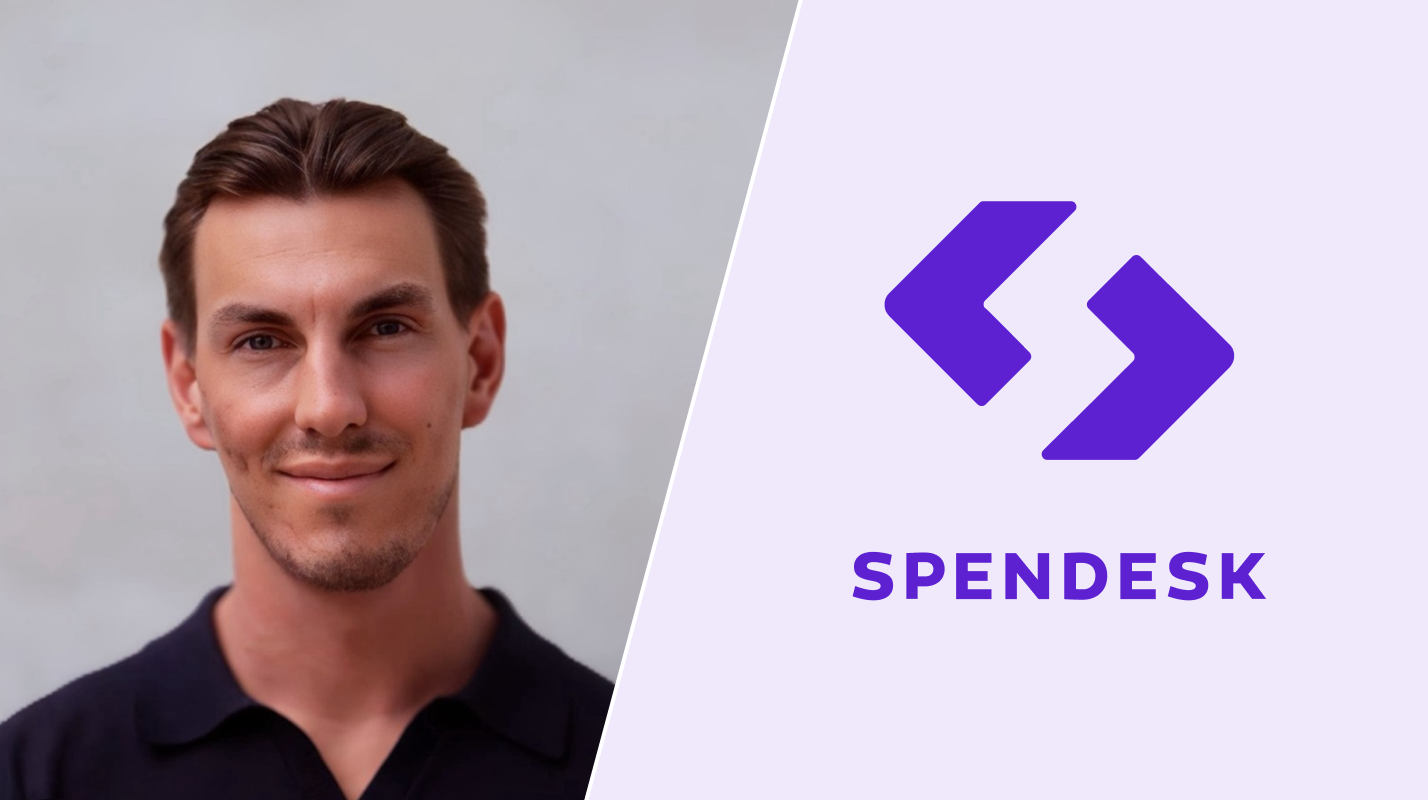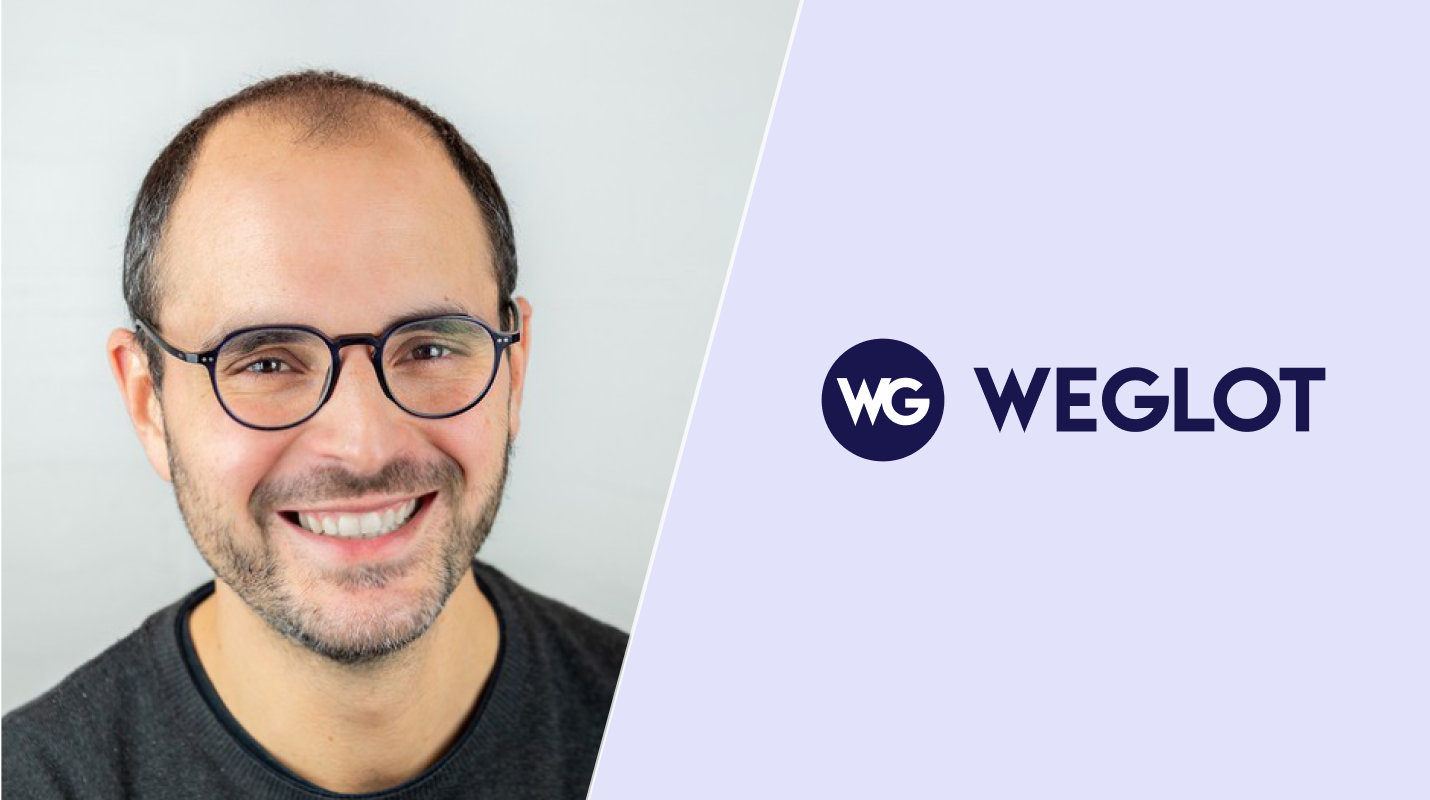


Jonathan Chemouny leads GTM at Elevenlabs, one of the fastest-growing AI startups in the world. A sales leader with 10+ years of experience at companies like Intercom, he's now helping turn cutting-edge voice AI into revenue, fast.
When Jon joined ElevenLabs in early 2025, outbound was just 5% of the pipeline. By Q2, it was 35%, and climbing. His team closed the quarter at 210% quota attainment, driven by creative multi-channel tactics, a strong culture of A/B testing, and some of the most innovative outreach in SaaS.
.png)
Scaled outbound from 5% → 35% of total pipeline in under 6 months.
Q2 2025: 210% quota attainment.
Booked meetings with CAC40 CEOs using AI-cloned voice.
AI audio research & deployment company. Their tools power realistic text-to-speech, voice cloning, and conversational agents, making content accessible in any language or voice.
ICP & persona:
The voice as a platform is so universal that defining ICPs can be challenge. That said they decided to focus on the ICP below:
- AI Agents: Companies looking to improve their customer experience, such as Klarna.
- Media Creation Tools: Companies building on ElevenLabs to provide voice capabilities.
- Media and Entertainment: Companies using our technology to produce or edit content, for instance Time magazine.
- Gaming: Studios seeking to control character voices. We recently worked with Fortnite to provide the voice of Darth Vader!
Average deal size & sales cycle:
- Variable depending on the ICP but ~$50K ARR.
- Average sales cycle in less than 2 months.
Team structure & setup:
- 4 SDRs, 13 AEs
- Pods by territory (UK, France, DACH, Southern Europe)
- FDEs (Forward Deployed Engineers) + CSMs
KPIs
Main targets:
- SDRs are comped on meetings booked and revenue from outbound deals they helped unlock.
- Each SDR is expected to source 20 SQLs/month.
- A SQL is only counted when:
- Qualified by the SDR
- AND accepted by the AE (not marked as closed-lost)
“We’re not here to book a meeting for the sake of it. We want SDRs to unlock real opportunities.”
Metrics they watch with benchmarks:
- Reply rate (email): 5–10%
- LinkedIn connect rate: ~70%
- LinkedIn message reply rate: ~30%
- Top campaigns: 25% reply rate, 4% interest rate

- Bounce rate other open rate open rate
“Open rates are misleading and tracking them hurts deliverability. On the other side, many reps overlook bounce rate, but it's crucial. High bounce rates can actually get your domain blocked."
Lead sourcing & qualification
Segmentation & discovery with SalesNav
SalesNav is where the team starts to build the top of their funnel:
- Targeting by territory, titles (e.g. Head of AI, Innovation Lead), industry, and employee size
- Identifying buying committees and multi-threading across orgs
- Surfacing leads based on activity (e.g. job changes, mentions of AI, or startup lists like Sifted)
“Try searching ‘Head of AI’ in SalesNav. You’d be surprised how many big companies already have one. AI isn’t a future topic — it’s happening now.”
SalesNav is also used to spot key triggers: new hires, exec changes, company follows, or mentions of ElevenLabs tech.
Some reps also use Chat GPT to find new accounts based on niche prompts
(e.g. “B2B SaaS companies recently launched in Germany with CX focus”)
Data enrichment, scoring & prioritization with Clay
Once target accounts and leads are identified, Clay becomes the central command hub:
- Enriches contact data (email, phone, LinkedIn, job history)
- Scores accounts based on tech stack, traffic, geography, and product fit
- Pulls in external signals (e.g. Trustpilot reviews, website visits, CX pain points)
- Deduplicates against Salesforce using custom templates
- Filters out accounts already touched within the last 30 days (rules of engagement)
“Clay is where everything happens. Enrichment, scoring, deduping, syncing to Lemlist — it’s our data brain.”
They also use Clay’s lookalike functionality to surface similar companies based on shared traits, a powerful way to scale campaigns that work.
Buying signals they track and leverage:
- Recent product launches (esp. AI-related)
- Tech stack clues (e.g. Zendesk → strong CX budget)
- Website traffic spikes or visits
- LinkedIn engagement (likes, comments, follows)
- Review insights (e.g. “slow support” = possible voice automation use case)
“Context is everything. If someone follows us, comments, or hits our site, it makes cold emails feel like warm ones.”
.png)
Outreach strategy & sequences
“A great sequence is like a Netflix show. You need a killer first episode. And the last one has to end with a bang.”
Multichannel is non-negotiable. Because it warms the leads. A typical flow looks like:
- LinkedIn profile view — Just to warm the lead
- First email — Gives value or insight, no CTA
- LinkedIn connect — Surprisingly, without a message (gets better acceptance)
- Follow-up email — Short, tailored, possibly with a metric or case study
- LinkedIn DM or call — Based on behavior
- WhatsApp — Especially for LATAM or high-intent leads
.gif)
“We’re not trying to sell in the first email. We’re trying to build a relationship.”
- Lemlist helps Jon build branching sequences based on lead behavior. For instance, if someone engages on LinkedIn, that might trigger a new thread. If not, the next step might be an audio or WhatsApp message.
- For Jon, great messaging is useless if it doesn’t land. That’s why his team takes deliverability seriously — obsessing over details that many skip.
- They rotate between 3+ prospecting domains per rep
- They set strict daily send limits
- They rely on Lemlist’s liquid syntax to ensure every email is unique (e.g., dynamic greetings)
- He’s also relentless about monitoring bounce rate
“It might seem basic, but bounce rate is a red flag. It tells email providers you’re sending to fake or dead inboxes. That kills your reputation.”
- Jon’s team uses AI to draft personalised messaged. They personalise the hook, mostely based on the news coming from the company
One of our AEs built a custom GPT agent that generates highly personalized outreach in seconds — all he has to do is input the prospect’s name, title, and company. The AI then crafts a message with a tailored hook based on recent company news. He’s even booked meetings with CAC 40 CEOs using this approach — proof that the right message, at the right time, really works.
Unique strengths & differentiators
Obsessive testing culture
Jon doesn’t guess, he tests. A/B testing isn’t just a tactic for him, it’s part of his DNA, shaped by his early background in search advertising. Whether it's subject lines, tone, send time, CTAs, or even emoji usage, everything gets put through experimentation.
“Most of the time, I think I know which version will win. and I’m wrong. That’s exactly why we test.”
He starts simple: two versions of the same email with different subject lines. Once a winner emerges, it stays — and a new challenger takes its place. It’s a constant loop of refinement.
“The smallest difference — even one or two points in conversion — can mean huge gains over the course of a year. With volume, those small lifts compound.”
For instance he tested two versions of a subject line:
- ‘ElevenLabs, let’s chat’
- ‘ElevenLabs, let’s connect [First Name]’
He was convinced the second version would win. It didn’t.
He encourages his team to A/B test everything, but also notices it's often overlooked:
“Most reps just send what feels right. But if you’re not testing, you're not learning. I constantly push my team: create a B version, always.”
His golden rule? Start small. Subject line first. Then the CTA. Then the core content. Build from there as the data grows.
“Testing isn’t about flashy tactics. It’s about discipline — and repeating the process until performance compounds.”
Field-first SDRs
For Jon, great prospecting doesn’t just happen in sequences — it happens in the field. His SDRs don’t sit behind screens hoping for replies. They get on planes, attend local dinners, visit offices, and sit shoulder-to-shoulder with real users.
“Outbound is still human. The fastest way to learn what matters to your buyer? Meet them. Watch them work. Listen to their pain.”
When Jon was at Intercom, he spent days inside a customer’s call center, listening to live support calls just to understand the friction. At ElevenLabs, he encourages SDRs to do the same: shadow users, visit offices, get offline context.
The results? Real relationships and real pipeline.
- In Warsaw, the team ran on-site discovery meetings at Nvidia
- In Switzerland, Jon turned one warm lead into a full-on workshop by inviting others from the same org
- In Berlin and Madrid, they hosted private dinners with prospects and customers — blending networking with subtle discovery
“If you have one warm conversation in a city, turn it into three. Don’t fly home with one logo — come back with a territory.”
It’s not just good sales. It’s what helped the team hit 210% of quota last quarter.
“You don’t elevate SDRs by flooding inboxes. You do it by putting them in the room with real buyers. That’s how we build salespeople, not just bookers.”
Whatsapp: the dark horse of high-intent outreach
While many outbound teams still debate whether WhatsApp belongs in sales, Jon’s team is already testing — and winning — with it.
“In LATAM, WhatsApp is the business channel. In Brazil, deals happen there before email even gets read.”
But even in Europe, WhatsApp is emerging as a powerful mid-to-late funnel tool — especially for high-intent leads, prospects who’ve engaged elsewhere, or those who’ve gone dark after a demo.
How the team uses WhatsApp in outbound:
- Mid-funnel reactivation: When a lead stops replying via email or LinkedIn, WhatsApp becomes a pattern interrupt.
- Context-first approach: They only message leads who already engaged via LinkedIn or inbound.
“We never just cold blast. It’s always: ‘Hey, you filled this form / followed us / joined the webinar — just following up here.’”
- Voice-first = on-brand: WhatsApp is the perfect match for ElevenLabs’ audio tech — their reps send voice notes powered by ElevenLabs' own AI.
“It’s the best kind of demo — a WhatsApp voice note using our cloned voice. It gets replies and shows off the product.”
⚠️ But there are risks…
“If you get banned on WhatsApp, that number is done. No way to recover.”
That’s why Jon’s team follows strict operational hygiene:
- They bought dedicated WhatsApp phone numbers
- Warm up each number before sending volume
- Follow Lemlist’s WhatsApp deliverability best practices (they joined the beta after seeing it in a Lemlist webinar)
- Keep messages light, not salesy — think value touch, not pitch
Jon recorded a message in his own cloned voice, added animation, and sent it via LinkedIn:

“The magic is: when I send that message, I’m selling the product by using the product. It looks good. Super visual, super personalized. Most of the time, when I send it, I get a meeting.”
And because the medium is the message, prospects immediately see ElevenLabs in action.
Templates & resources
Hey [First Name]
I noticed you just launched [X product] and saw your post about [Y topic].
At ElevenLabs, we’re helping companies like [Example] bring conversational AI to life in under 30 days.
Just sharing this case study in case it’s useful. No meeting ask — happy to just share notes.
Best,
Jon


